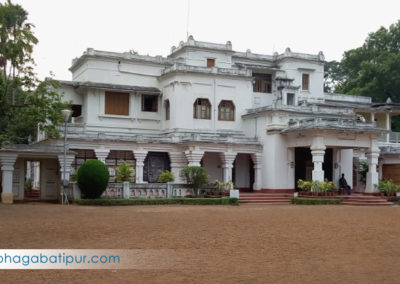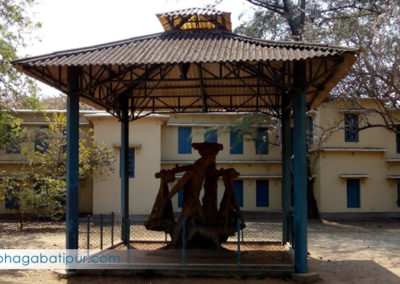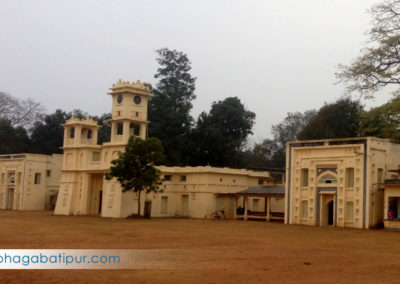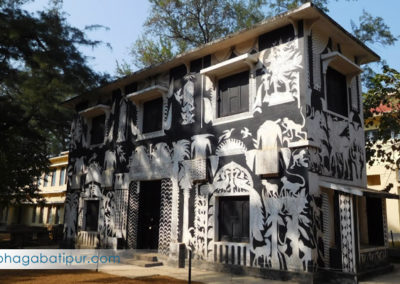Maharshi Debendranath Tagore purchased the entire land of Raipur from the erstwhile Zamindar Bhuban Mohan Sinha for One Rupee in 1862, renamed it Shantiniketan (Abode of Peace) and later handed over the same to his son Rabndranath Tagore and rest is history. Initially it was Pathabhavan, a school for children in the lap of nature and meant for learning things from natural environment. After receiving Nobel Prize in 1913, Rabindranath expanded this institution into a Univarsity in 1920-21. Gradually the little school for children at Santiniketan became a world university, Visva-Bharati, a centre for Indian Culture, a seminary for Eastern Studies and a meeting-place of the East and West. The poet selected for its motto an ancient Sanskrit verse, “Yatra Visvam Bhavatieka Nidam”, which means, “Where the whole World meets in a single nest.” With the same ideology in 1924, Siksha Satra was founded with the intention of spreading education among the under privileged section of society Visva-Bharati University has witnessed growth of countless people of extra ordinary talent and repute in the fields of Academics, Science, Arts & Music and other domains as well. Amartya Sen (Economist), Shantideb Ghosh and Kanika Bandyopadhyay (Singer), Ram Kinkar Baij (Sculptor), Sagarmoy Ghosh (Journalist) and many more personalities were born and brought up here. At Santiniketan Satyajit Ray had found means to pursue his interest in music & films. Indira Priyadarshini Gandhi went to the Visva-Bharati University at Santiniketan. Kala Bhavan is an institute fo Fine Arts Sculpture was founded by Nandalal Bose, a disciple of Abanindranath Tagore, the pioneer of Modern Art. At present the senior students of Kala Bhavan reside there. Another stalwart to grace the honour of Kala Bhavan was Ram Kinkar Baij. Sculptures created by him viz. ‘Mill Call’, ‘Sujata’, ‘Santhal Family’ ‘Anirban Shikha’, ‘The Apostle of Non-violence’ etc. have earned immense applause over the years and the appeal is universal by all means. The front wall of Kala Bhavan boasts of a huge painting by Nandalal Base. Upasana Griha or Glass House was made of several coloured Belgian glasses with marble steps on all four sides, by Rabindranath Tagore’s father in 1863. During evening prayer, candles are lit around the prayer hall, and it creates magnificent look in flickering light every Wednesday.



